Sensitivity Analysis of the Scattering-Based SARBM3D Despeckling Algorithm
Abstract
:1. Introduction
- •
- the scattering model describing the surface;
- •
- surface parameter errors apart from the local incidence angle;
- •
- the DEM resolution (on both simulated and actual SAR data);
- •
- errors in the SAR image-DEM coregistration step.
2. Materials and Methods
2.1. SARBM3D
2.2. SB-SARBM3D
3. Results
3.1. Sensitivity against the Scattering Behavior of the Surface
3.2. Sensitivity against Surface Parameters
3.3. Sensitivity against the DEM Resolution
3.4. Sensitivity against the DEM Coregistration
3.5. Actual Case Scenario
4. Conclusions
- •
- scattering model;
- •
- surface parameters errors apart from the local incidence angle;
- •
- DEM resolution (on both simulated and actual SAR images);
- •
- errors in the coregistration step.
Conflicts of Interest
References
- Goodman, J. Some fundamental properties of speckle. J. Opt. Soc. Am. 1976, 66, 1145–1150. [Google Scholar] [CrossRef]
- Lee, J.S. Digital Image Enhancement and Noise Filtering by Use of Local Statistics. IEEE Trans. Pattern Anal. Mach. Intell. 1980, PAMI-2, 165–168. [Google Scholar] [CrossRef]
- Lee, J.S. Refined filtering of image noise using local statistics. Comput. Graph. Image Process. 1981, 15, 380–389. [Google Scholar] [CrossRef]
- Frost, V.S.; Stiles, J.A.; Shanmugan, K.S.; Holtzman, J.C. A model for radar images and its application to adaptive digital filtering of multiplicative noise. IEEE Trans. Pattern Anal. Mach. Intell. 1982, PAMI-4, 157–166. [Google Scholar] [CrossRef]
- Kuan, D.T.; Sawchuk, A.A.; Strand, T.C.; Chavel, P. Adaptive noise smoothing filter for images with signal-dependent noise. IEEE Trans. Pattern Anal. Mach. Intell. 1985, PAMI-7, 165–177. [Google Scholar] [CrossRef]
- Argenti, F.; Alparone, L. Speckle removal from SAR images in the undecimated wavelet domain. IEEE Trans. Geosci. Remote Sens. 2002, 40, 2363–2374. [Google Scholar] [CrossRef]
- Argenti, F.; Bianchi, T.; Alparone, L. Multiresolution MAP Despeckling of SAR Images Based on Locally Adaptive Generalized Gaussian pdf Modeling. IEEE Trans. Image Process. 2006, 15, 3385–3399. [Google Scholar] [CrossRef] [PubMed]
- Baraldi, A.; Panniggiani, F. A refined gamma MAP SAR speckle filter with improved geometrical adaptivity. IEEE Trans. Geosci. Remote Sens. 1995, 33, 1245–1257. [Google Scholar] [CrossRef]
- Bianchi, T.; Argenti, F.; Alparone, L. Segmentation-Based MAP Despeckling of SAR Images in the Undecimated Wavelet Domain. IEEE Trans. Geosci. Remote Sens. 2008, 46, 2728–2742. [Google Scholar] [CrossRef]
- Deledalle, C.-A.; Denis, L.; Tupin, F. Iterative Weighted Maximum Likelihood Denoising With Probabilistic Patch-Based Weights. IEEE Trans. Image Process. 2009, 18, 2661–2672. [Google Scholar] [CrossRef] [PubMed]
- Parrilli, S.; Poderico, M.; Angelino, C.V.; Verdoliva, L. A Nonlocal SAR Image Denoising Algorithm Based on LLMMSE Wavelet Shrinkage. IEEE Trans. Geosci. Remote Sens. 2012, 50, 606–616. [Google Scholar] [CrossRef]
- Buades, A.; Coll, B.; Morel, J.M. A Review of Image Denoising Algorithms, with a New One. Multiscale Model. Simul. 2005, 4, 490–530. [Google Scholar] [CrossRef]
- Dabov, K.; Foi, A.; Katkovnik, V.; Egiazarian, K. Image Denoising by Sparse 3-D Transform-Domain Collaborative Filtering. IEEE Trans. Image Process. 2007, 16, 2080–2095. [Google Scholar] [CrossRef] [PubMed]
- Di Martino, G.; Di Simone, A.; Iodice, A.; Riccio, D.; Ruello, G. Non-Local Means SAR Despeckling Based on Scattering. In Proceedings of the IEEE International Geoscience and Remote Sensing Symposium (IGARSS’ 15), Milan, Italy, 26–31 July 2015; pp. 3172–3174.
- Di Martino, G.; Di Simone, A.; Iodice, A.; Riccio, D. Scattering-Based Non-Local Means SAR Despeckling. IEEE Trans. Geosci. Remote Sens. 2016, 54, 3574–3588. [Google Scholar] [CrossRef]
- Di Martino, G.; Di Simone, A.; Iodice, A.; Poggi, G.; Riccio, D.; Verdoliva, L. Scattering-Based SARBM3D. IEEE J. Sel. Topics Appl. Earth Observ. Remote Sens. 2016. [Google Scholar] [CrossRef]
- Franceschetti, G.; Riccio, D. Scattering, Natural Surfaces and Fractals; Academic: Burlington, MA, USA, 2007. [Google Scholar]
- Di Martino, G.; Riccio, D.; Zinno, I. SAR Imaging of Fractal Surfaces. IEEE Trans. Geosci. Remote Sens. 2012, 50, 630–644. [Google Scholar] [CrossRef]
- Di Martino, G.; Iodice, A.; Riccio, D.; Ruello, G.; Zinno, I. Angle Independence Properties of Fractal Dimension Maps Estimated from SAR Data. IEEE J. Sel. Topics Appl. Earth Observ. Remote Sens. 2013, 6, 1242–1253. [Google Scholar] [CrossRef]
- Touzi, R.; Lopes, A.; Bousquet, P. A statistical and geometrical edge detector for SAR images. IEEE Trans. Geosci. Remote Sens. 1988, 26, 764–773. [Google Scholar] [CrossRef]
- Lopes, A.; Nezry, E.; Touzi, R.; Laur, H. Structure detection and statistical adaptive speckle filtering in SAR images. Int. J. Remote Sens. 1993, 14, 1735–1758. [Google Scholar] [CrossRef]
- Franceschetti, G.; Migliaccio, M.; Riccio, D.; Schirinzi, G. SARAS: A SAR raw signal simulator. IEEE Trans. Geosci. Remote Sens. 1992, 30, 110–123. [Google Scholar] [CrossRef]
- Italian Space Agency. COSMO-SkyMed System Description & User Guide. Available online: http://www.cosmo-skymed.it/docs/ASI-CSM-ENG-RS-093-A-CSKSysDescriptionAndUserGuide.pdf (accessed on 4 April 2016).
- Di Martino, G.; Poderico, M.; Poggi, G.; Riccio, D.; Verdoliva, L. Benchmarking Framework for SAR Despeckling. IEEE Trans. Geosci. Remote Sens. 2014, 52, 1596–1615. [Google Scholar] [CrossRef]
- Wang, Z.; Bovik, A.C.; Sheikh, H.R.; Simoncelli, E.P. Image Quality Assessment: From Error Visibility to Structural Similarity. IEEE Trans. Image Process. 2004, 13, 1–14. [Google Scholar] [CrossRef]
- Tsang, L.; Kong, J.A.; Ding, K. Scattering of Electromagnetic Waves, Theories and Applications; John Wiley: New York, NY, USA, 2000. [Google Scholar]
- Ulaby, F.T.; Moore, R.K.; Fung, A.K. Microwave Remote Sensing: Active and Passive, Microwave Remote Sensing Fundamentals and Radiometry; Addison-Wesley: Reading, MA, USA, 1981. [Google Scholar]
- Fung, A.K.; Li, Z.; Chen, K.S. Backscattering from a Randomly Rough Dielectric Surface. IEEE Trans. Geosci. Remote Sens. 1992, 30, 356–369. [Google Scholar] [CrossRef]
- Beckmann, P.; Spizzichino, A. The Scattering of Electromagnetic Waves from Rough Surfaces; Artech House: Norwood, MA, USA, 1987. [Google Scholar]
- Bors, A.G.; Hancock, E.R.; Wilson, R.C. Terrain Analysis Using Radar Shape-from-Shading. IEEE Trans. Pattern Anal. Mach. Intell. 2003, 25, 974–992. [Google Scholar] [CrossRef]
- Ruello, G.; Blanco, P.; Iodice, A.; Mallorqui, J.J.; Riccio, D.; Broquetas, A.; Franceschetti, G. Synthesis, construction and validation of a fractal surface. IEEE Trans. Geosci. Remote Sens. 2006, 44, 1403–1412. [Google Scholar]
- Di Martino, G.; Di Simone, A.; Iodice, A.; Riccio, D.; Ruello, G. On shape from shading and SAR images: An overview and a new perspective. In Proceedings of the IEEE International Geoscience Remote Sensing Symposium (IGARSS ’14), Quebec, QC, Canada, 13–18 July 2014; pp. 1333–1336.
- Brooks, M.J.; Horn, B.K.P. Shape from Shading; MIT Press: Cambridge, MA, USA, 1989. [Google Scholar]
- Frankot, R.T.; Chellappa, R. Estimation of Surface Topography from SAR Imagery Using Shape from Shading Techniques. Artif. Intell. 1990, 43, 271–310. [Google Scholar] [CrossRef]
- Horn, B.K.P. Obtaining shapes from shading information. In The Psychology of Computer Vision; McGraw-Hill: New York, NY, USA, 1975; pp. 115–155. [Google Scholar]
- Ostrov, D.N. Boundary Conditions and Fast Algorithms for Surface Reconstructions from Synthetic Aperture Radar Data. IEEE Trans. Geosci. Remote Sens. 1999, 37, 335–346. [Google Scholar] [CrossRef]
- Iodice, A.; Natale, A.; Riccio, D. Retrieval of Soil Surface Parameters via a Polarimetric Two-Scale Model. IEEE Trans. Geosci. Remote Sens. 2011, 49, 2531–2547. [Google Scholar] [CrossRef]
- Franceschetti, G.; Iodice, A.; Maddaluno, S.; Riccio, D. A Fractal-Based Theoretical Framework for Retrieval of Surface Parameters from Electromagnetic Backscattering Data. IEEE Trans. Geosci. Remote Sens. 2000, 38, 641–650. [Google Scholar] [CrossRef]
- U.S. Geological Survey (USGS). Global 30 Arc-Second Elevation (GTOPO30). Available online: https://lta.cr.usgs.gov/GTOPO30 (accessed on 4 April 2016).
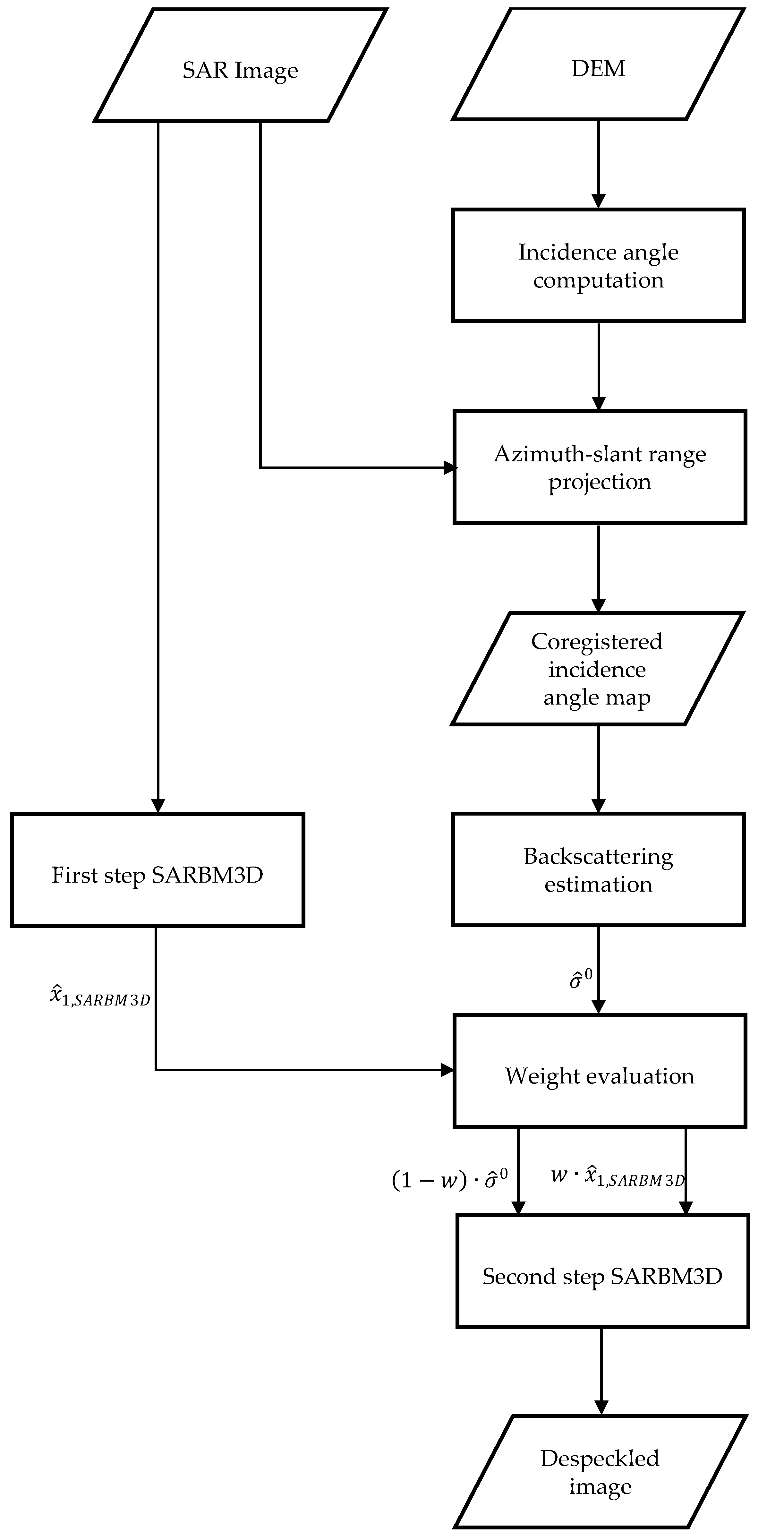

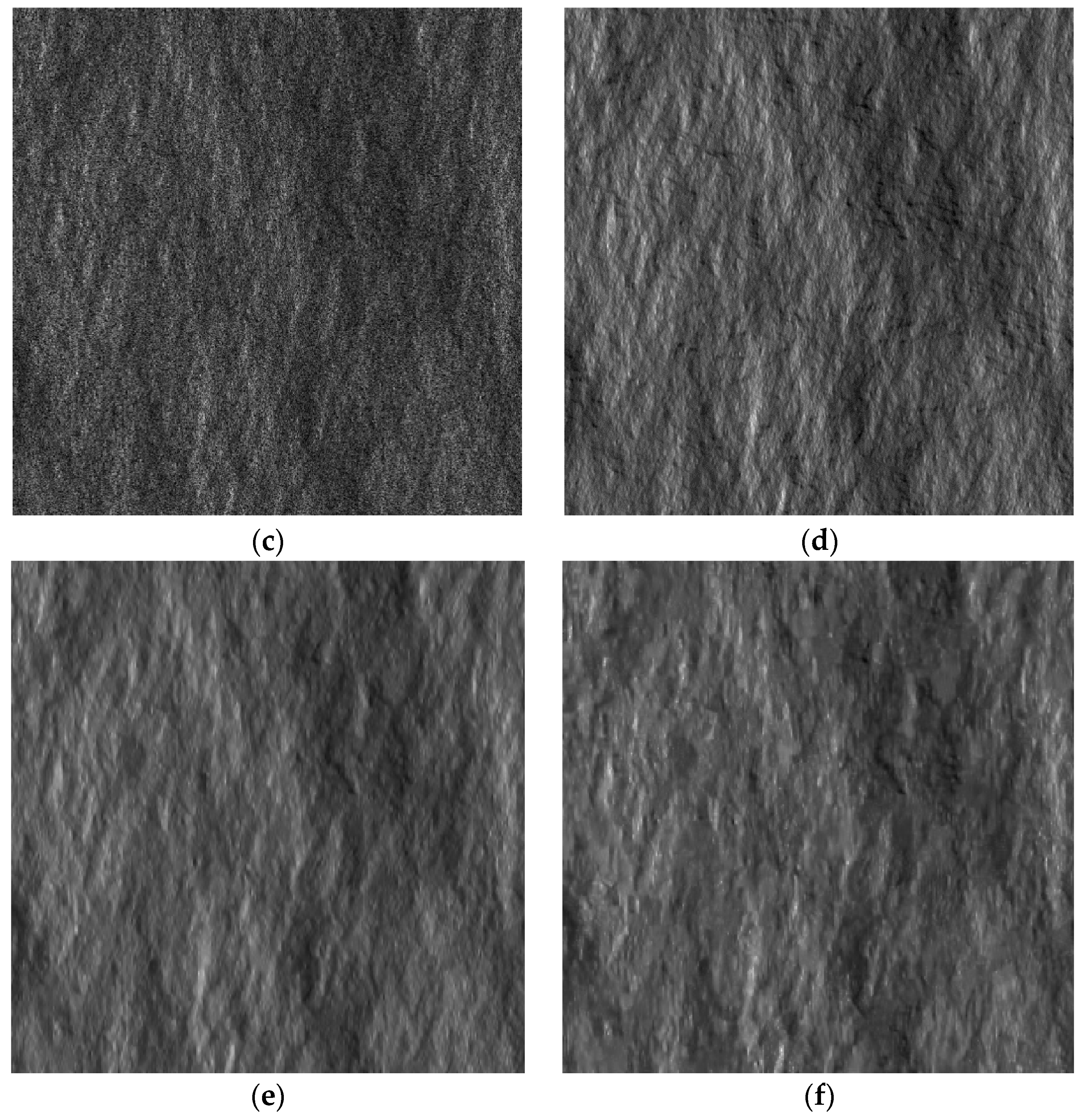
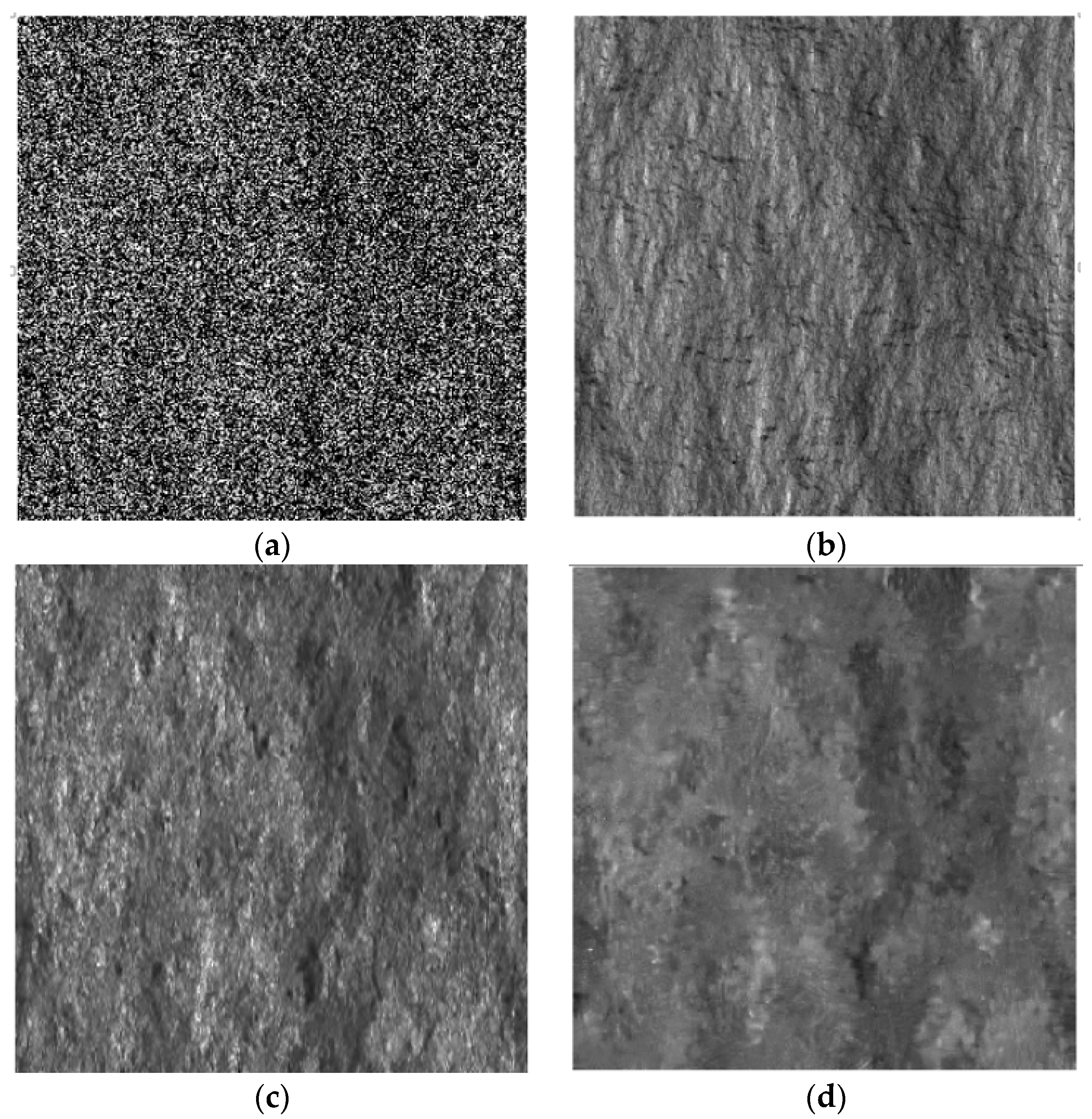
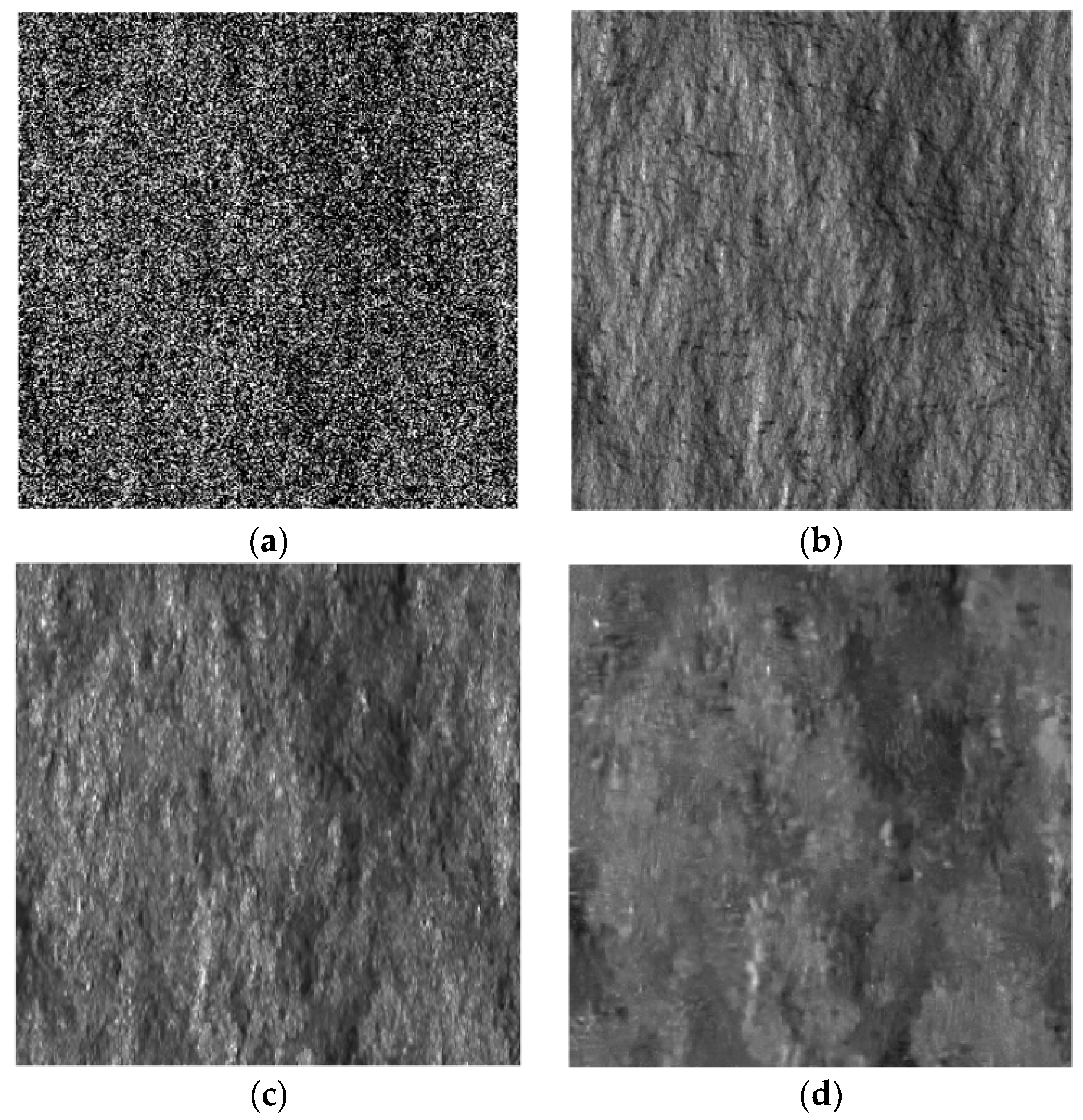
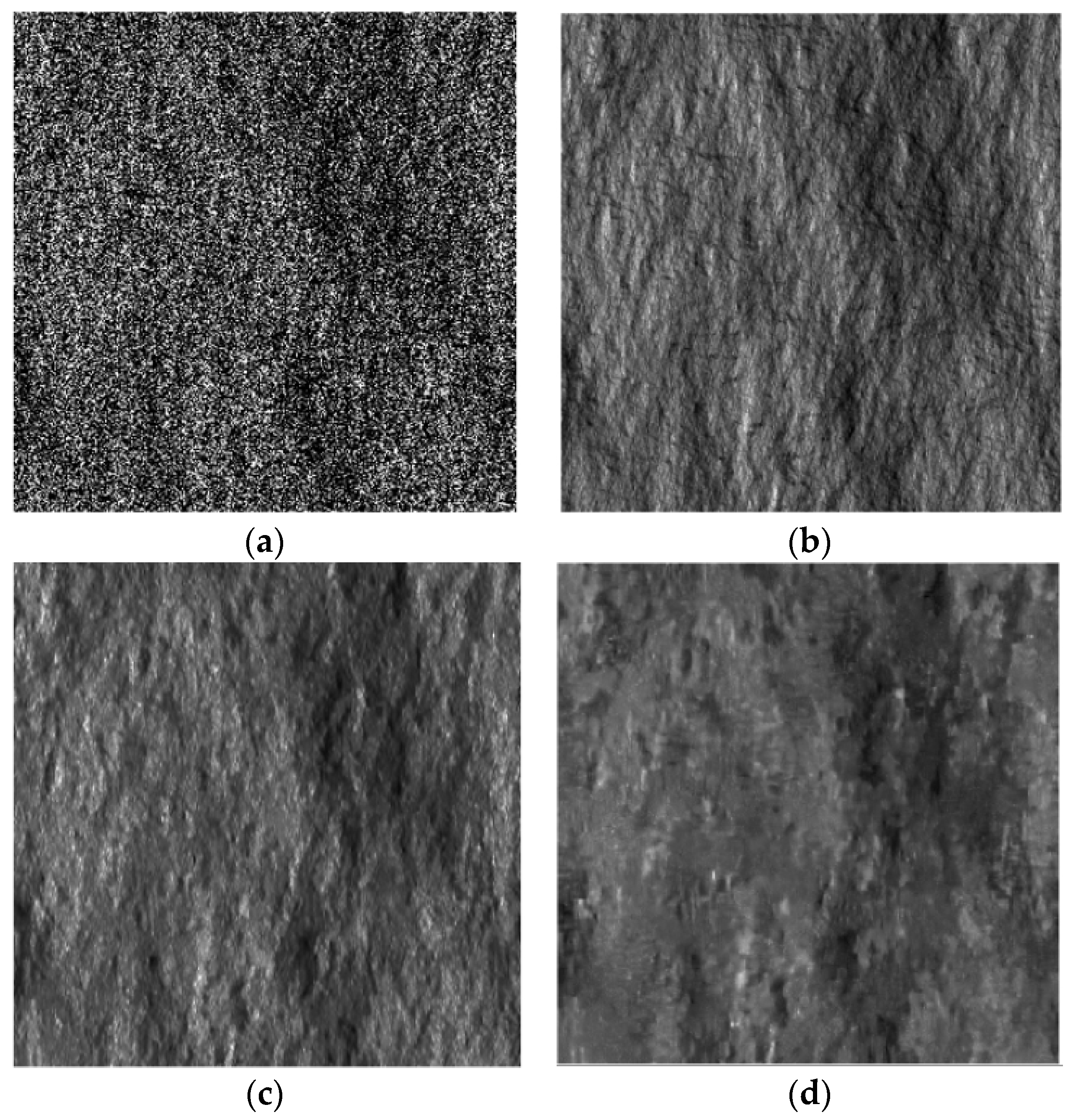
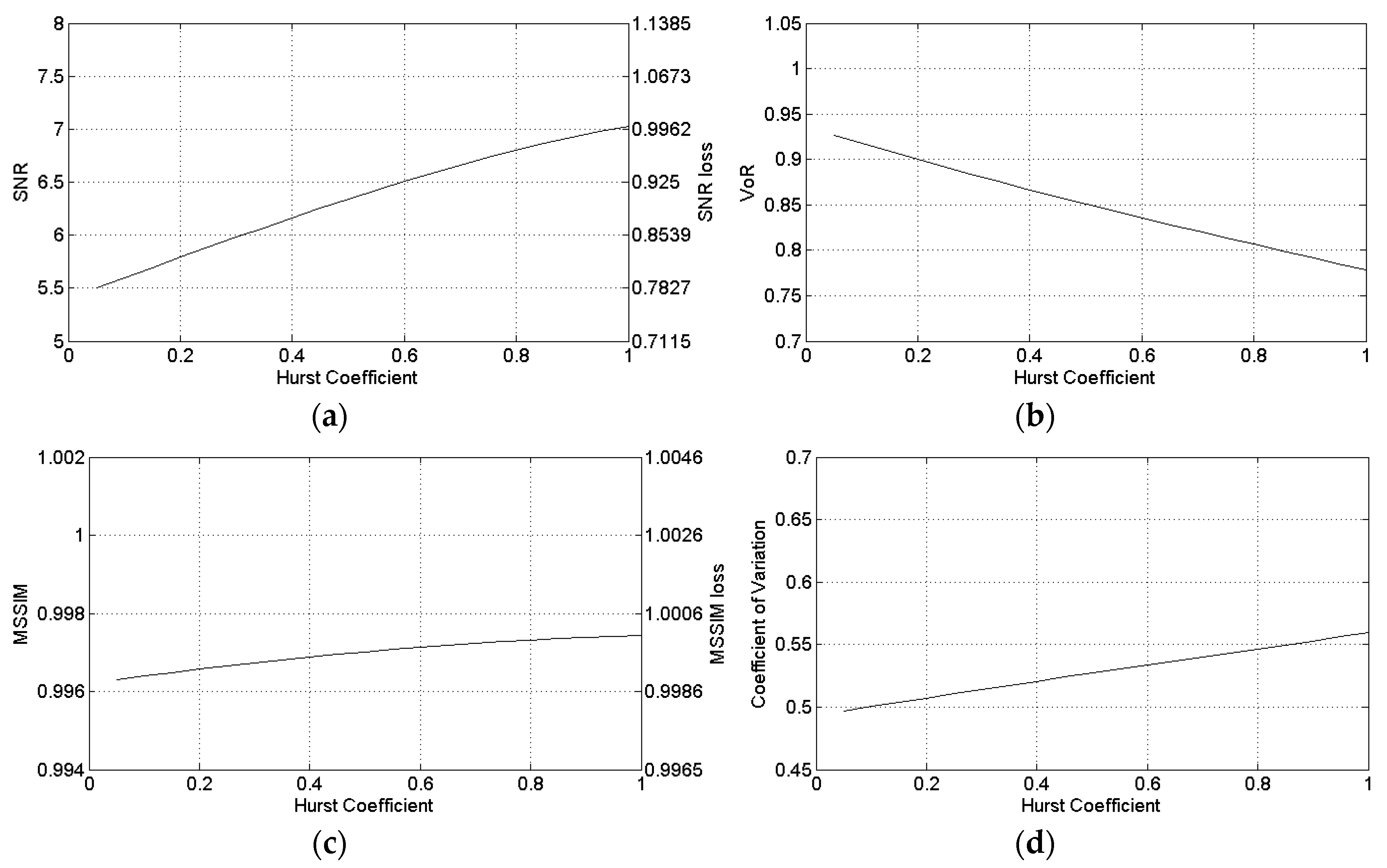
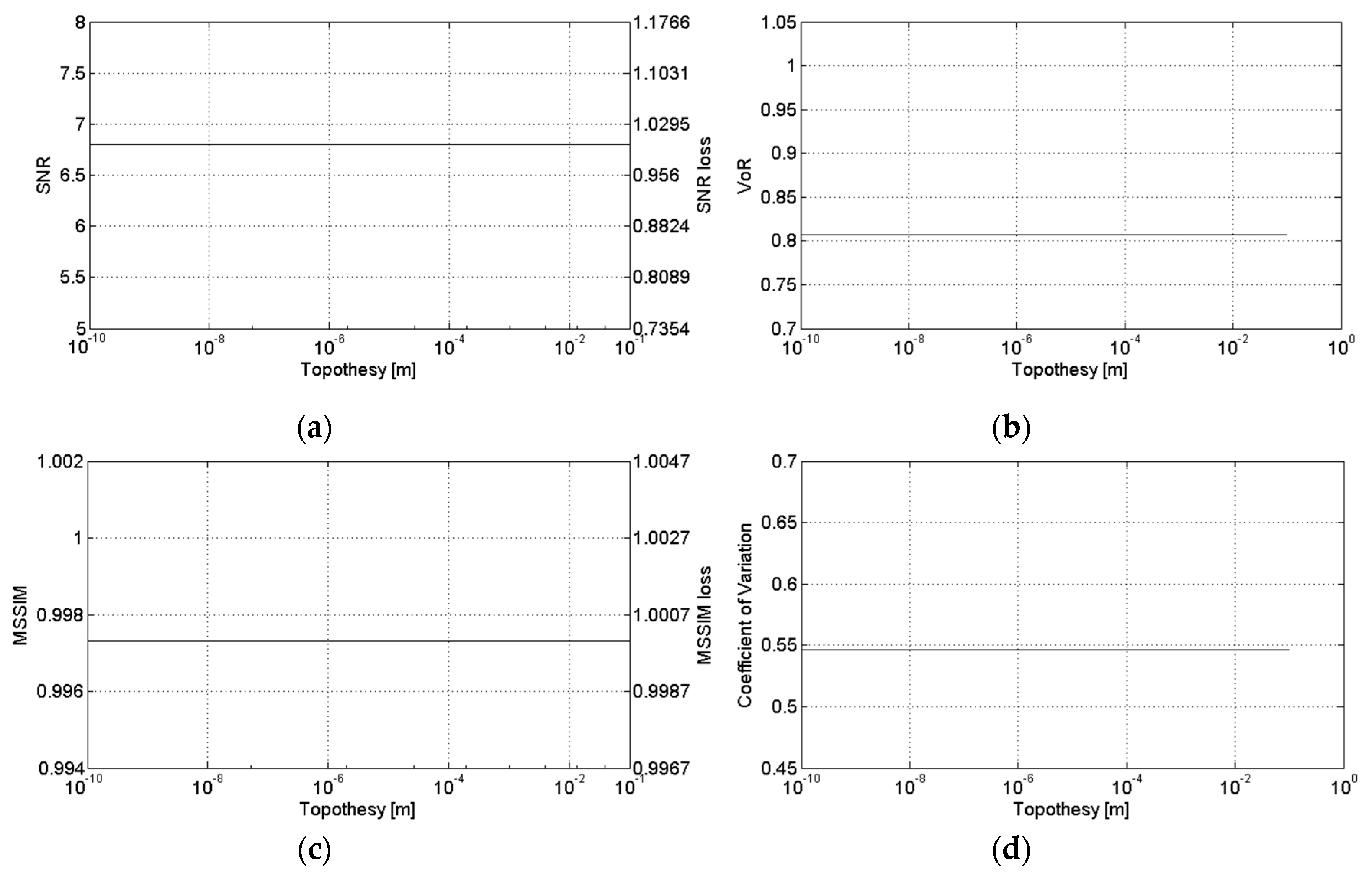
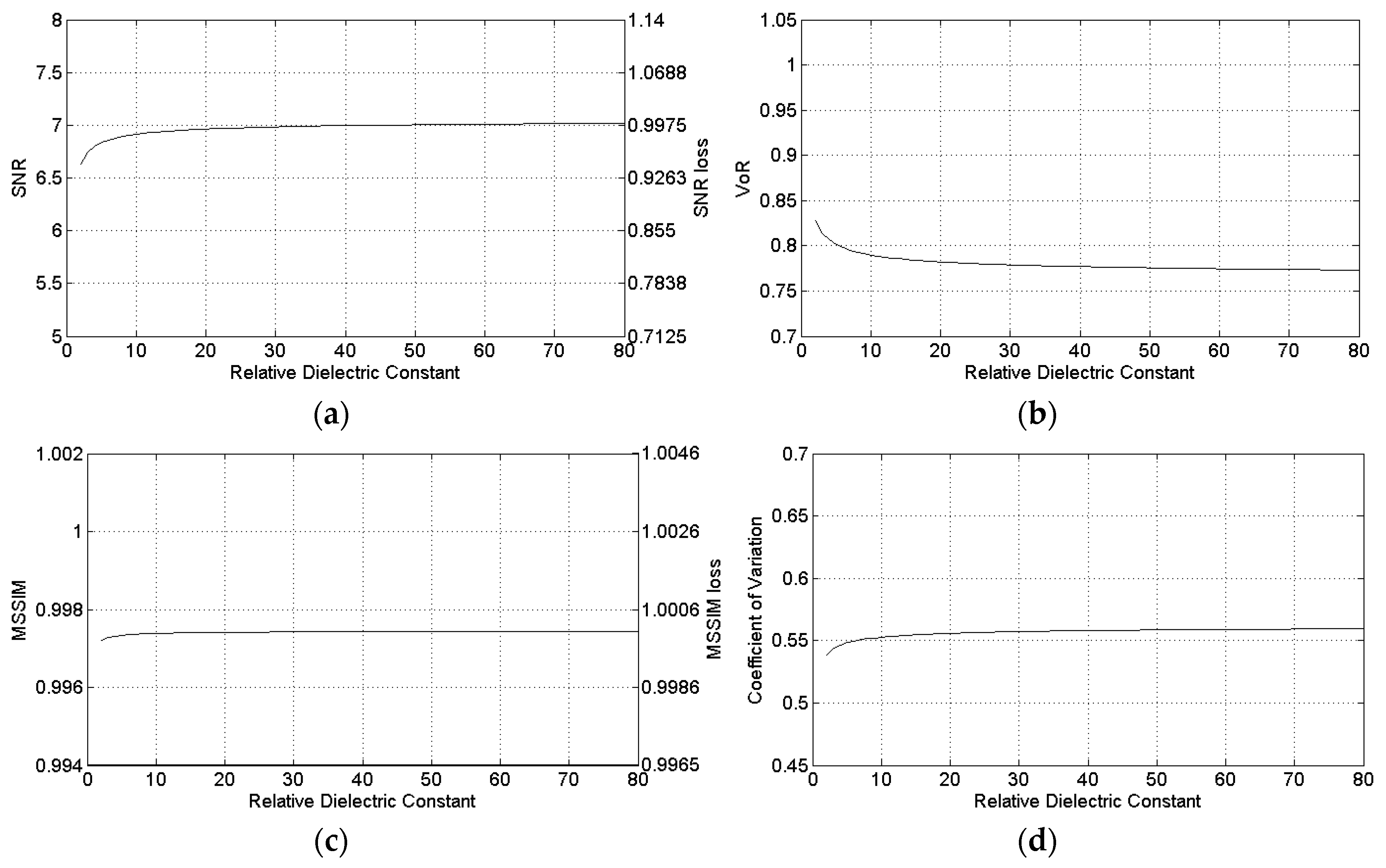
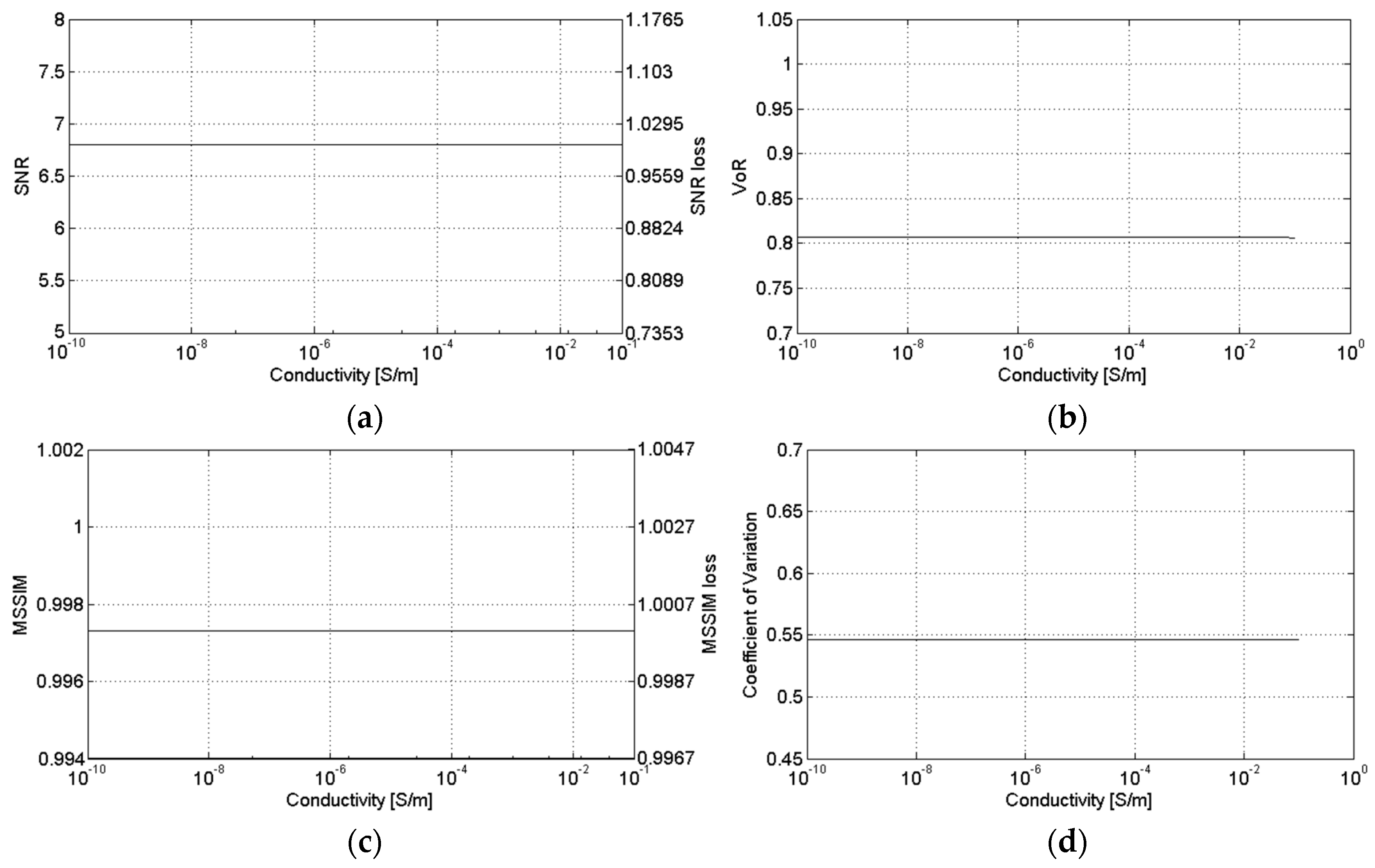
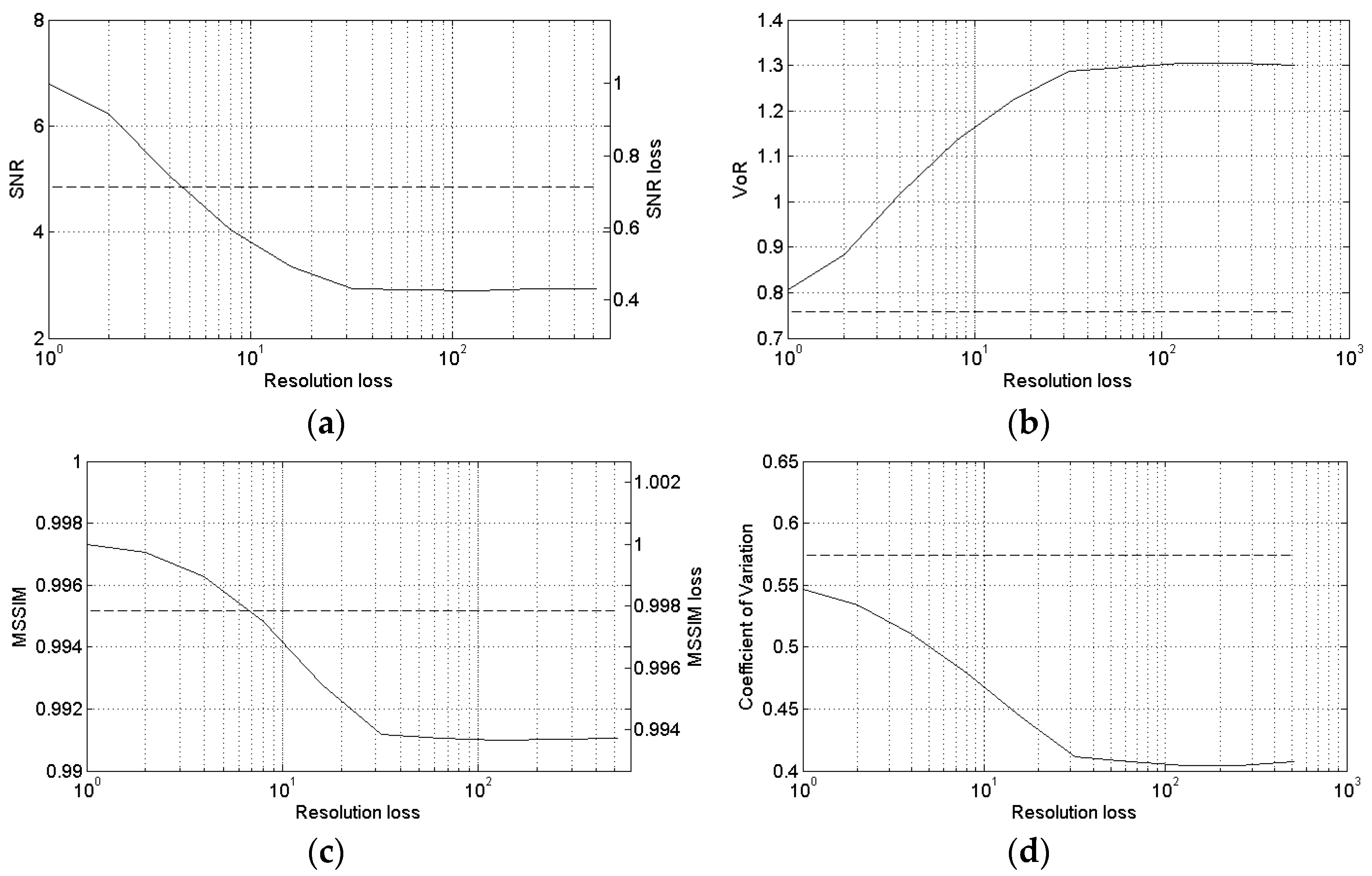
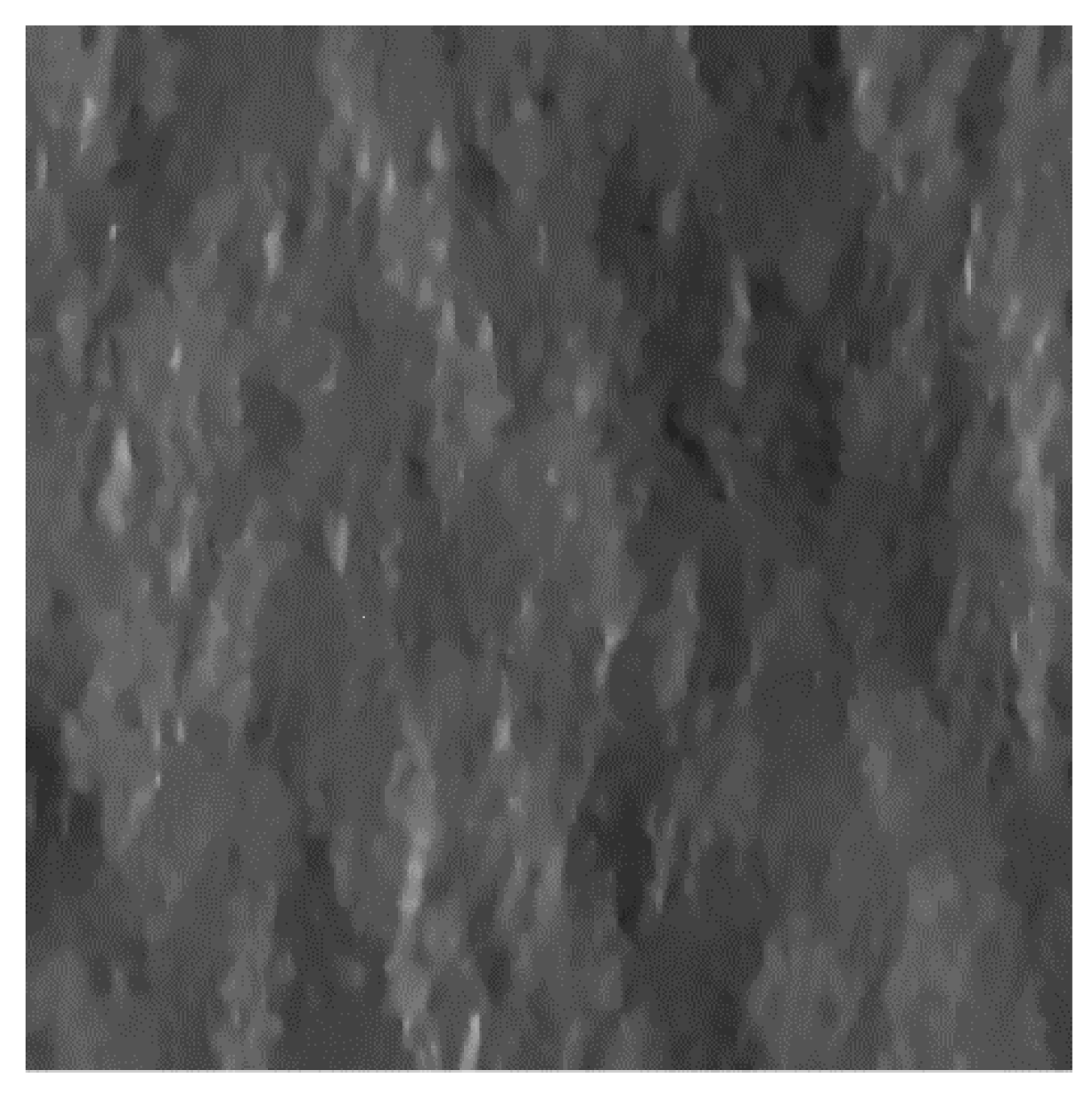

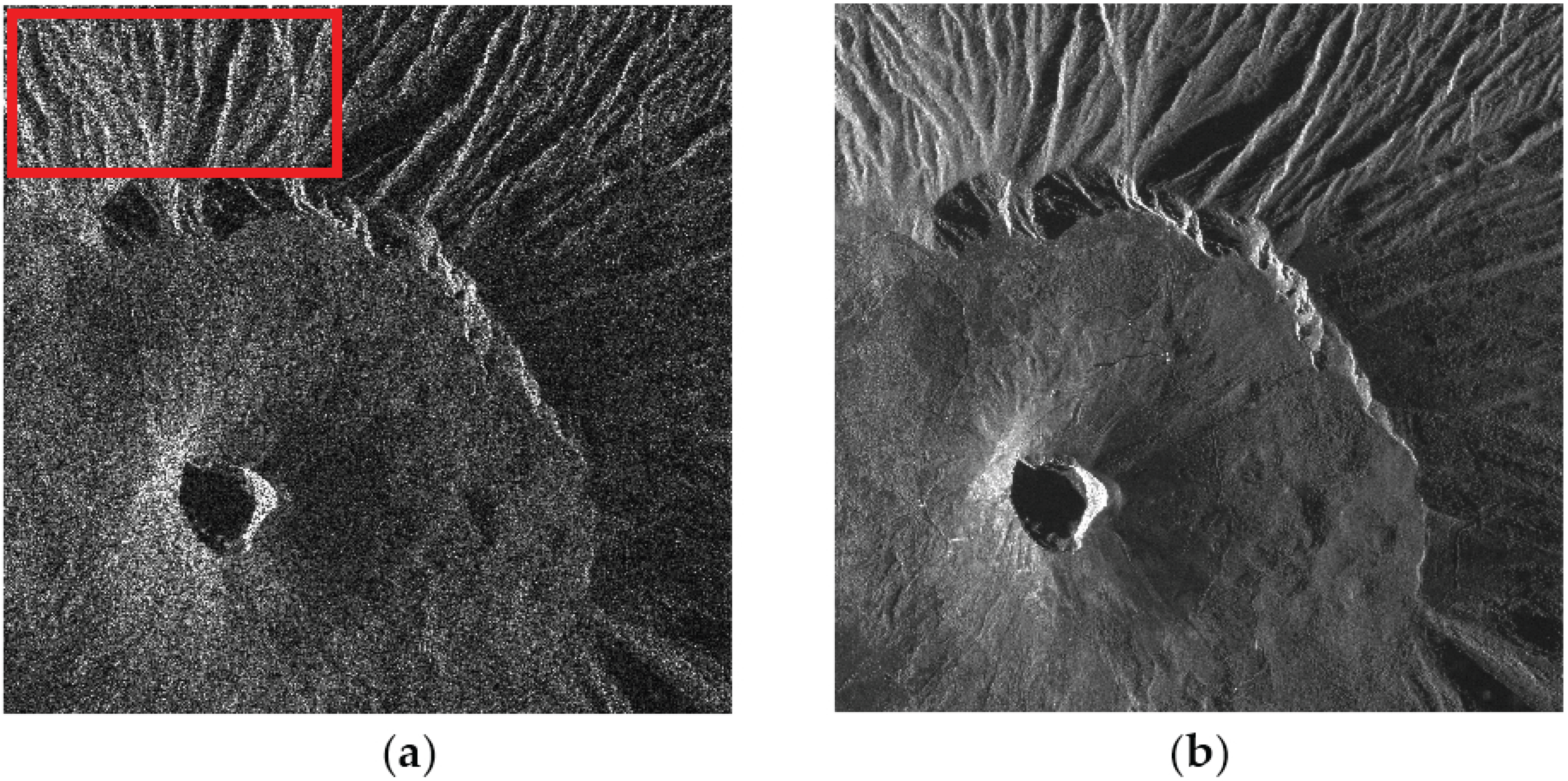
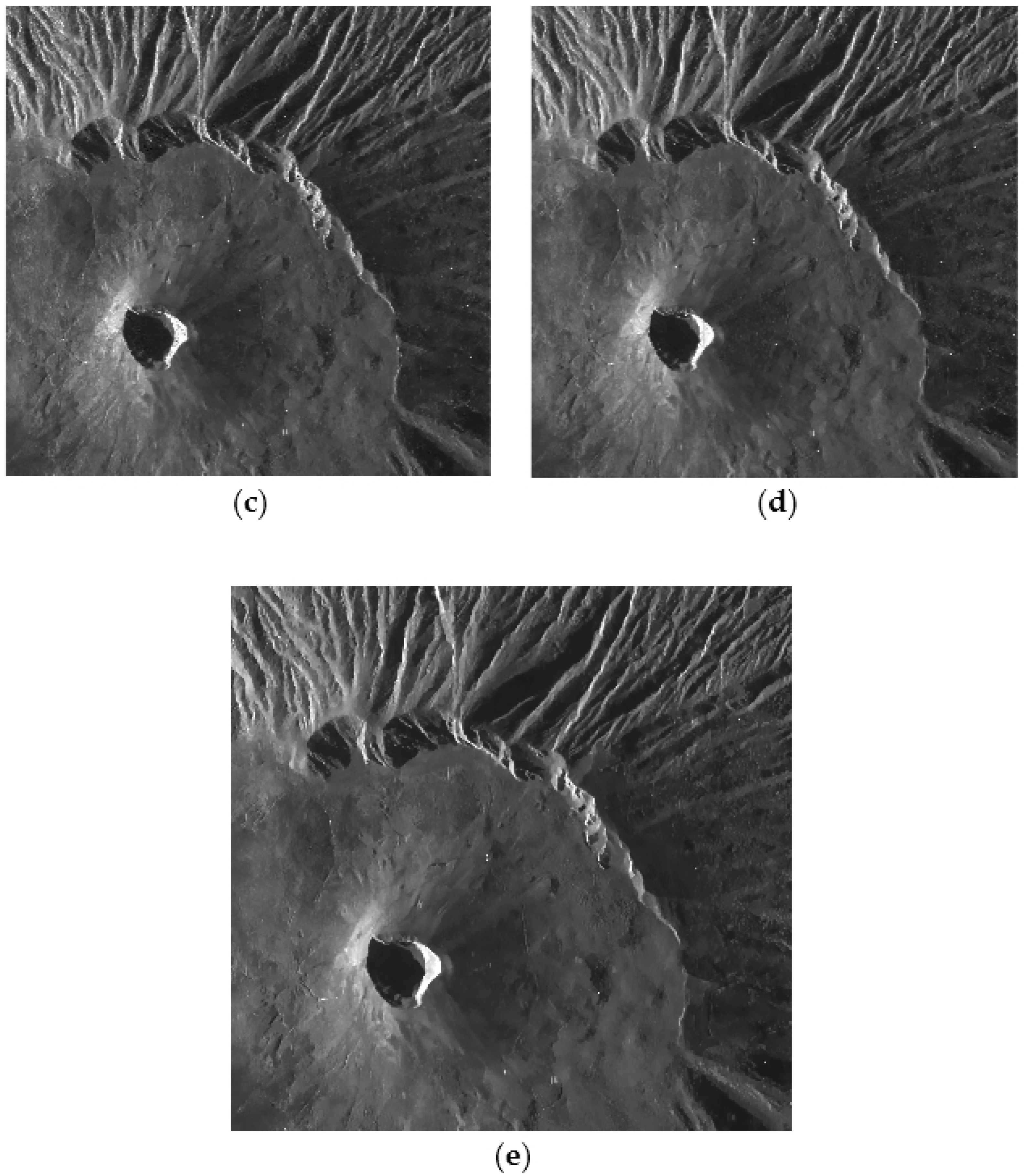
| SNR | VoR | Cx | MSSIM | |
|---|---|---|---|---|
| SPM | +∞ | 0.98 | 0.67 | 1.00 |
| cos ϑ | +∞ | 1.01 | 0.15 | 1.00 |
| cos2 ϑ | +∞ | 1.02 | 0.21 | 1.00 |
| cos4 ϑ | +∞ | 1.01 | 0.26 | 1.00 |
| SNR | VoR | Cx | MSSIM | |
|---|---|---|---|---|
| SPM | 6.80 | 0.81 | 0.55 | 1.00 |
| cos ϑ | 0.93 | 0.77 | 0.17 | 1.00 |
| cos2 ϑ | 2.19 | 0.78 | 0.19 | 1.00 |
| cos4 ϑ | 4.02 | 0.78 | 0.25 | 1.00 |
| SNR | VoR | Cx | MSSIM | |
|---|---|---|---|---|
| SPM | 4.84 | 0.76 | 0.57 | 0.99 |
| cos ϑ | 1.31 | 0.89 | 0.11 | 1.00 |
| cos2 ϑ | 1.84 | 0.90 | 0.14 | 1.00 |
| cos4 ϑ | 2.62 | 0.89 | 0.19 | 1.00 |
| SNR | VoR | Cx | MSSIM | |
|---|---|---|---|---|
| Reference | +∞ | 1.00 | 1.03 | 1.00 |
| 5-m DEM | 5.38 | 1.18 | 0.93 | 0.99 |
| 90-m DEM | 5.67 | 1.20 | 0.89 | 0.99 |
| 1-km DEM | 5.73 | 1.34 | 0.83 | 0.99 |
© 2016 by the author; licensee MDPI, Basel, Switzerland. This article is an open access article distributed under the terms and conditions of the Creative Commons Attribution (CC-BY) license (http://creativecommons.org/licenses/by/4.0/).
Share and Cite
Di Simone, A. Sensitivity Analysis of the Scattering-Based SARBM3D Despeckling Algorithm. Sensors 2016, 16, 971. https://doi.org/10.3390/s16070971
Di Simone A. Sensitivity Analysis of the Scattering-Based SARBM3D Despeckling Algorithm. Sensors. 2016; 16(7):971. https://doi.org/10.3390/s16070971
Chicago/Turabian StyleDi Simone, Alessio. 2016. "Sensitivity Analysis of the Scattering-Based SARBM3D Despeckling Algorithm" Sensors 16, no. 7: 971. https://doi.org/10.3390/s16070971





